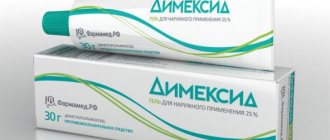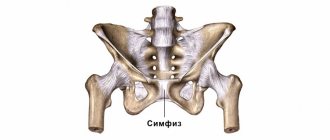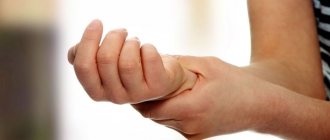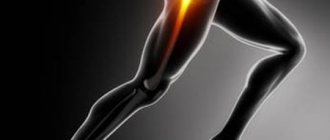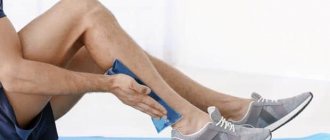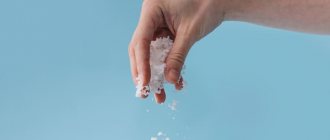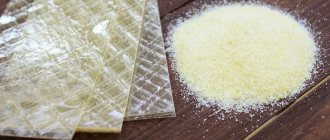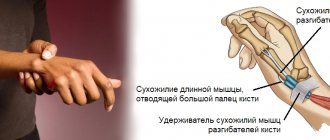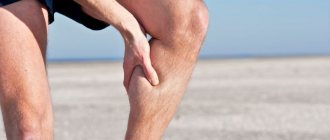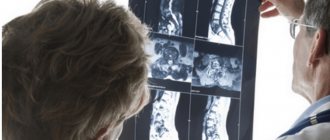Symptoms of plantar fasciitis
The signs of this disease are quite typical, which makes it possible to easily recognize it. Patients typically experience the following symptoms:
- morning sharp pain in the heel after getting out of bed;
- regular occurrence of heel pain with increasing load;
- pain in the heel after a long stay in an upright position or prolonged sitting.
An examination of the foot and an analysis of the patient’s complaints by a surgeon or osteopath is quite enough to diagnose plantar fasciitis. If there is a suspicion of the formation of a heel spur, x-rays are prescribed.
Physiotherapy
The patient’s task is to ensure adequate elasticity of the heel (plantar) fascia. Do this in different ways. The following therapeutic exercises will increase stretching, reduce pain, and help protect the plantar fascia from microtears.
- Position yourself next to the wall at a distance of approximately 30–40 cm (at the length of your thigh, since you will have to squat).
- Place your palms on the wall at shoulder level, as if you were about to do a push-up.
- Place your feet in a line, one after the other. The patient must be in the back. If both hurt, the exercise must be repeated twice, changing legs.
- Sit down, your heels are firmly on the floor and do not come off. The depth of the squat is until you feel how the bottom of the lower leg of the outer leg stretches.
- Stay in this position for 10–15 seconds.
- Repeat this warm-up 5 times.
Read also: Therapeutic exercises for arthrosis of the shoulder joint
The next exercise continues to warm up the calf muscles, while simultaneously working the plantar fascia itself, stretching it a little and preparing it for further action.
- Place a low bench, about 7–10 cm high, at a short distance from the wall. It is necessary for someone to press one edge of it with their foot - the one closest to the wall.
- Stand with half your foot on the edge of the bench. Place your hands on the wall as in the first exercise. Lower your heels below the level of the bench.
- Press your whole body against the wall, feel how the muscles of your lower leg tighten.
- Return to the starting position and rise onto your toes. Lower yourself back down, but your heels should be level with the bench you're standing on. Repeat the movement 15 times.
- Make it more difficult by lifting one leg. Perform calf raises on one leg, then on the other. 15 times each.
The next and final exercise is aimed at stretching and normalizing the plantar fascia itself. Remember, if you feel severe pain, stop and rest. If the pain does not go away, take a long break. Return to exercise when it becomes easier.
- Sit on the floor, back straight, legs extended and slightly apart.
- Bend forward and grab your toes and the arch of your foot with your hands.
- Pull your hands towards you.
- When you can no longer stretch your foot, hold for 10–15 seconds.
- Then return to the starting position and repeat with the other leg.
You can use a strong band instead of your hands if your flexibility does not allow you to reach your feet with your hands.
After therapeutic exercises for the feet, perform taping - fixation of the foot in order to reduce the load on the plantar fascia.
Treatment Methods for Plantar Fasciitis
This disease cannot be left untreated - even if the pain subsides for a while, then it returns with a vengeance. Therefore, you should first eliminate the cause of the disease: reduce stress (including those associated with excess weight), give up high heels and tight shoes, and purchase comfortable shoes with shock-absorbing soles. Then you should move on to eliminating the inflammatory process. There are several treatments for plantar fasciitis. In each specific case, the doctor selects the therapy. As a rule, treatment is complex.
First of all, you should unload the foot when walking. For this purpose, special pads and insoles are used. An effective method, especially if the disease is not advanced, can be night splints - orthopedic devices in the form of a plastic boot. They are worn while sleeping. Such devices (orthoses) help avoid acute pain when getting out of bed. Special gymnastics, during which the muscles of the foot are stretched and the calf muscles are worked, will also bring some relief.
An effective method is physiotherapy. Doctors usually prescribe massage, warming rubs, mineral water baths, and mud applications. In case of a complex clinical picture, ultrasound treatment, low-intensity laser therapy, and x-ray therapy are indicated. Sometimes corticosteroids are administered locally - diprospan, flosteron.
If plantar fasciitis is complicated by a large heel spur, shock wave therapy (SWT) is prescribed. The method is based on the impact on the affected area of sound waves of the required frequency, generated by a special device. As a result of this effect, the growths are destroyed (as if dried out), and the process of restoration of adjacent tissues begins. The procedure is practically painless and has recently become increasingly popular in orthopedics.
Treatment of plantar fascia with shock wave therapy is possible in any medical clinic. The course of treatment will help to finally defeat the disease, and a decrease in pain is observed after the first sessions of shock wave therapy. Patients quickly return to their normal lifestyle.
Traditional medicine
Traditional methods for eliminating the pathological course in the fascia are not inferior in effectiveness to drugs from pharmacy chains. In addition, homemade medicines are several times cheaper.
Alternative medicine suggests the use of ointments and compresses to eliminate the pathology of fasciitis. It is effective to use ointments as a lotion to eliminate plantar pain.
To make one of these you will need:
- Egg.
- Butter – 200 grams.
- Vinegar – 2 tablespoons.
The egg is broken and vinegar is poured on top. The butter is melted, but not brought to a boil, and sent to the prepared products. There is no need to mix the mixture. The mass is covered with a lid and left for 3 days. Afterwards everything is mixed and used for its intended purpose.
The fabric is soaked in the prepared product, applied to the plantar area, then gauze is applied and socks are put on. Fasciitis should be treated before the ointment is completely used.
Baths
Before using creams and lotions to cure fasciitis, traditional medicine recommends taking baths.
Sea salt
The following traditional medicines are used for the procedure:
- Coarse sea salt – 2 tablespoons. Keep the heels in the bath for 15 minutes.
- Iodine – 10 drops and salt – 3 tablespoons. Manipulate in 3 liters of water with the addition of these products for 10 minutes. After the bath, the plantar ligament is lubricated with iodine.
- Use vinegar 9%, turpentine, vodka in equal volume. The products are mixed and heated using a water bath. The affected leg is dipped into the mixture and held until it cools. Afterwards, the solution is heated again and the procedure for treating the plantar zone is repeated.
Compresses
The treatment course using traditional medicine for the plantar ligament includes the use of compresses.
You can prepare night lotions using the following folk remedies:
- Using the herb cinquefoil to cure fasciitis. Chopped root - 2 tablespoons, pour ¼ cup of water, leave to stand under a table lamp. When 2 hours have passed, the softened roots are ground into a paste-like mass and applied to the sole, secured with a bandage. A bag is put on top, then a sock. The lotion is placed in the plantar area for 10 o'clock.
- Elderberry infusion. The berries are placed in a 0.5 container and filled with alcohol. You need to let the infusion brew in the dark. You need to use a compress daily to relieve fasciitis.
Prevention of plantar fasciitis
There is no unique recipe to avoid plantar fascia. But if you follow basic rules, the risk of becoming a victim of this disease is significantly reduced.
- If you decide to take up fitness, distribute the loads evenly across all body systems. A sharp transition from a sedentary lifestyle to an overly active one can have a detrimental effect on the condition of the fascia.
- Avoid uncomfortable shoes. Do not overuse high-heeled shoes - the unnatural position of the foot injures the fascia.
- Watch your weight - excess body weight puts more pressure on the foot. It's no surprise that plantar fasciitis is often diagnosed in overweight people.
Modern medicine can solve many problems, and plantar fasciitis is one of them. Medical help will help you get rid of it. The latest Swiss equipment and modern techniques, including UVT, are used here. At the same time, the cost of UVT therapy is one of the lowest in Moscow, which makes this method of treatment accessible to all segments of the population.
Prognosis for Sharp syndrome
Despite its complex range of symptoms, Sharpe syndrome is usually not too serious. Most people can improve their health with medications and lifestyle changes.
Your healthcare provider will need to develop a long-term treatment protocol that will best suit your symptoms.
During the course of the disease, various complications and long-term consequences may occur. If the disease remains untreated, mixed diseases of the connective tissue of the skin and polyarthritis with painful changes and vascular diseases may appear.
Recommended clinics
EUROPEAN CLINIC OF SPORTS TRAUMATOLOGY AND ORTHOPEDICS (EMC Orlovsky)
Around the clock. Russia, Moscow, Orlovsky lane, 7 +7
Interpretation of PET CT results from another health care facility – RUB 5,700. Remote telemonitoring of health status – 5800 rub. Doctor's appointment/Consultation:
- orthopedist-traumatologist – 10,700 rubles.
- surgeon 10,700 rub.
- Lecture by a specialist doctor – 35,000 rubles.
- Foreign trauma surgeon – 9,600 rubles.
Russian-Israeli Medical
Mon-Fri: 09:00 – 19:00 Russia, Moscow, 2nd Tverskoy-Yamskoy lane, building 10 +7,,,
- Admission to Ph.D. for joint replacement – 3000 rubles.
- Appointment with a professor of joint replacement – 5,000 rubles.
- Admission to Ph.D. for arthroscopy of joints – 3000 rubles.
- Removal of intra-articular bodies – 24,000 rubles.
- Reconstruction of feet – 97,000 rubles.
- Hip replacement – 410,000 rubles.
- Endoprosthetics of the knee joint – 400,000 rubles.
Physiotherapy
When and how to treat trochanteritis of the hip joint with exercise therapy, the doctor decides. Typically, a course of therapeutic exercises is prescribed after the acute symptoms of the disease have been relieved, that is, when the pain completely disappears. Special gentle exercises provided by the course help to activate blood flow and strengthen the thigh muscles. However, they must be performed with the permission of a doctor, under the supervision of a specialist, so as not to harm the joint.
As a type of exercise therapy, post-isometric relaxation can be prescribed. This technique involves performing passive stretching of the external ligaments and muscles in certain positions of the patient’s body. Stretching them will help overload the hip joint and related structures. A regular stretching program to maximize the length of the muscles and ligaments is essential for proper hip function. Exercises are carried out together with a doctor, for 20 minutes every other day. For tangible results, a minimum of 10 sessions are required.
Leg exercises
With regular exercise, you can not only strengthen your leg muscles, but also overcome heel fasciitis. The exercises are simple and even a person who is far from any sport can cope with them. We suggest considering several exercises:
- Go to the wall, lean on your hands. Place one leg forward, move the other back as far as possible, but do not lift your heels off the floor. Have you felt a stretch and the heel of your leg, when pulled back, can barely stay on the floor? Everything is correct! Hold your body in this position for 30 seconds. Switch legs, repeat 10 times for each.
- This exercise is especially good to perform in the morning, when the muscles are relaxed. Before you go on errands, do tasks that will help you stretch them, and the pain will not be so intense. If you do exercises every day, you will get better quickly. Take a tin can (0.5 l) with lemonade, you can also use a golf ball. Place the object under your foot, pressing lightly with it. Start rolling from toe to heel and back. It will take 50 circles for each leg.
- Sit on a straight, hard surface with your legs extended. Use your hands to reach your toes (at first you can bend your knees a little, then a stretch will appear) and pull them towards you. Straighten up, releasing your fingers, then repeat, and so on 10-20 times.
